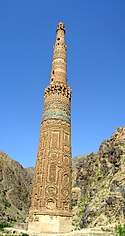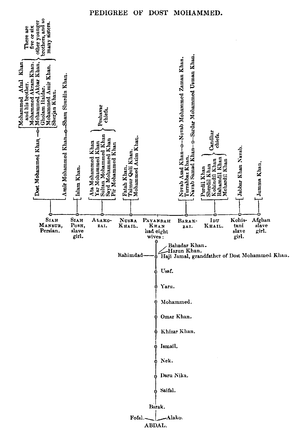Barakzai dynasty
| Barakzai dynasty | |
|---|---|
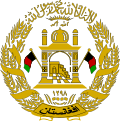 | |
| Country | Afghanistan |
| Ethnicity | Pashtun |
| Founded | 1826 |
| Founder | Dost Mohammad Khan |
| Current head | Ahmed Shah Khan |
| Titles | Emir, King |
| Total population | |
|---|---|
| several millions | |
| Regions with significant populations | |
| Afghanistan, Pashtunistan | |
| Languages | |
| Pashto, Dari, | |
| Religion | |
| Predominantly Sunni Islam |
The two branches of the Barakzai dynasty (Translation of Barakzai: sons of Barak)[1] ruled modern day Afghanistan from 1826 to 1973 when the monarchy ended under Musahiban Mohammad Zahir Shah. The Barakzai dynasty was established by Dost Mohammad Khan after the Durrani dynasty of Ahmad Shah Durrani was removed from power. During this era, Afghanistan saw much of its territory lost to the British in the south and east, Persia in the west, and Russia in the north. There were also many conflicts within Afghanistan, including the three major Anglo-Afghan Wars and the 1929 civil war.

History and background
| Part of a series on |
| Pashtuns |
|---|
 Native Pashtun areas in orange |
| Kingdoms |
| Religion |
The Barakzai dynasty was the line of rulers in Afghanistan in the 19th and 20th centuries. Following the fall of the Durrani Empire in 1826, chaos reigned in the domains of Ahmed Shah Durrani's Afghan Empire as various sons of Timur Shah struggled for supremacy. The Afghan Empire ceased to exist as a single nation state, disintegrating for a brief time into a fragmented collection of small units. Dost Mohammad Khan gained preeminence in 1826 and founded the Barakzai dynasty in about 1837. Thereafter, his descendants ruled in direct succession until 1929, when King Amanullah Khan abdicated and his cousin Mohammed Nadir Shah was elected king. The most prominent & powerful sub-clan of the Barakzai Pashtun tribe is the Musahiban, of which the 1826–1973 Afghanistan ruling dynasty comes.[2]
Mohammadzai
Mohammadzai are the most prominent & powerful sub-tribe of Barakzai, they belong to the branch of the Durrani confederacy, and are primarily centered around Kandahar. They can also be found in other provinces throughout Afghanistan as well across the border in the Pakistan's Balochistan Province.
Musahiban are the descendants of Sultan Muhammed Khan, ruler of Peshawar, brother of Dost Muhammad Khan. Mohammadzai Barakzai are closely related to Amanullah Khan. The family of Nadir and Zahir Shah. Payendah Khel are descendants of Payendah Khan, head of the Mohammadzai branch of the Barakzai tribe during the reigns of Timur and Zaman Shah, who became rulers with the decline of the Sadduzai.
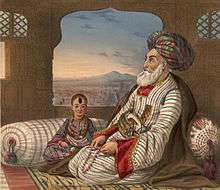
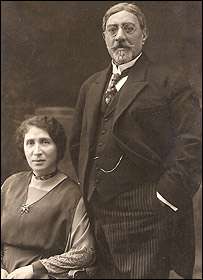 Mahmud Tarzi, son of Ghulam Muhammad Tarzi, became the pioneer of Afghan journalism, he belonged to the Tarzi royal family
Mahmud Tarzi, son of Ghulam Muhammad Tarzi, became the pioneer of Afghan journalism, he belonged to the Tarzi royal family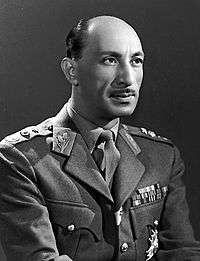 Mohammed Zahir Shah, was the last King (Badshah) of Afghanistan, reigning for four decades, from 1933 until he was ousted by a coup in 1973, he belonged to the Mohammadzai tribe
Mohammed Zahir Shah, was the last King (Badshah) of Afghanistan, reigning for four decades, from 1933 until he was ousted by a coup in 1973, he belonged to the Mohammadzai tribe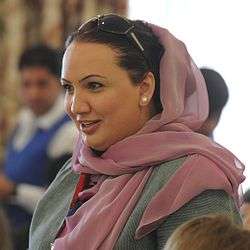 Shukria Barakzai, is an Afghan politician, journalist and entrepreneur, and a prominent Muslim feminist. She belongs to the Barakzai tribe
Shukria Barakzai, is an Afghan politician, journalist and entrepreneur, and a prominent Muslim feminist. She belongs to the Barakzai tribe Genealogy of the Barakzai rulers of Afghanistan from the Barakzai dynasty
Genealogy of the Barakzai rulers of Afghanistan from the Barakzai dynasty
List of Barakzai rulers
- Dost Mohammad Khan (1826 – August 1839)
- Sardar Rahmdil Khan – Ruler of Kandahar & Baluchistan
- Sardar Payinda Khan – Ruler of Kandahar & Baluchistan
- Akbar Khan (December 1842 – 1845)
- Dost Mohammad Khan (1845 – 9 June 1863)
- Sher Ali Khan (12 June 1863 – 5 May 1866
- Mohammad Afzal Khan (5 May 1866 – 7 October 1867)
- Mohammad Azam Khan (7 October 1867 – 21 February 1868)
- Sher Ali Khan (21 February 1868 – 21 February 1879)
- Mohammad Yaqub Khan (21 February 1879 – 28 October 1879)
- Abdur Rahman Khan (11 August 1880 – 3 October 1901)
- Habibullah Khan (3 October 1901 – 20 February 1919)
- Amanullah Khan (28 February 1919 – 14 January 1929)
- Sardar Ghulam Muhammad Tarzi – Poet, Ruler of Kandahar & Baluchistan.
- Inayatullah Khan (14 January 1929 – 17 January 1929)
- Mohammed Nadir Shah (17 October 1929 – 8 November 1933)
- Mohammed Zahir Shah (8 November 1933 – 17 July 1973)
- Ahmad Shah Khan (23 July 2007 – Present)
Heads of the House of Barakzai since 1973
- King Mohammed Zahir Shah (17 July 1973 – 23 July 2007)
- Crown Prince Ahmad Shah Khan (23 July 2007 – Present)
Languages
The principal language of Barakzai is Pashto. Formerly, Dari Persian was used as the language for records and correspondence; until the late nineteenth century tombstones were also inscribed in Dari. The language of the Barakzai tribes in Pishin, Quetta, Gulistan and Dukki (Distt. Loralai) is just like the language spoken in Kandahar. Those who have settled away from Pishin speak local languages (Pushto), such as Multani or Saraiki in Multan, Hindko in Hazara, Urdu in Bhopal and Sindhi in Sindh. Barakzai, a dialect of Pashto, is the language spoken by Harnai Barakzai.[3][4][5]
See also
- Bani Isra'il
- Barakzai
- Mohammadzai
- Theory of Pashtun descent from Israelites
- Pashtunistan
- Pakthas
- European influence in Afghanistan
- Anglo-Afghan War
- Loya jirga – "grand jirga", a large congress called to discuss a particularly important event
- Meshrano Jirga – "elders' jirga", the upper house of the Afghan legislature
References
- ↑ Martin, Mike (2014). An Intimate War: An Oral History of the Helmand Conflict, 1978–2012. Oxford University Press. p. 321. ISBN 978-0199387984. Retrieved 26 July 2016.
In Pushtun folklore, Barak, Alak and Popol were brothers who went their separate ways to found tribes in their own namesake with the addition of the—zai (son of) suffix, for example, Barakzai.
- ↑ "Afghanistan". CIA. Retrieved 25 August 2010.
- ↑ Pakistan and the emergence of Islamic militancy in Afghanistan By Rizwan Hussain Page 16
- ↑ page 64 India and Central Asia By J. N. Roy, J.N. Roy And B.B. Kumar, Astha Bharati (Organization)
- ↑ Study of the Pathan Communities in Four States of India Archived 14 May 2008 at the Wayback Machine., Khyber.org (retrieved 30 January 2008)
